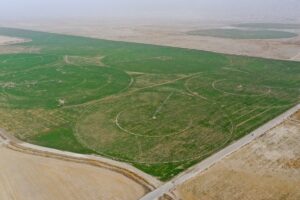The magnificence of ancient technology has captivated historians, archaeologists, and enthusiasts alike, offering a glimpse into the remarkable ingenuity of past civilizations.
 Pin
Pin Image by Freepik
From the awe-inspiring pyramids of Egypt to the advanced aqueduct systems of the Roman Empire, ancient technologies have left an indelible mark on human history. These groundbreaking inventions not only reflect the creativity and resourcefulness of our ancestors but also demonstrate their profound understanding of science, engineering, and craftsmanship. By delving into the mysteries of ancient technology, we embark on a fascinating journey to unravel the secrets of our past and uncover the enduring legacy of innovation that continues to shape our world today.
Table of Contents
Ancient Technology That Can’t Be Explained
1. The Antikythera Mechanism
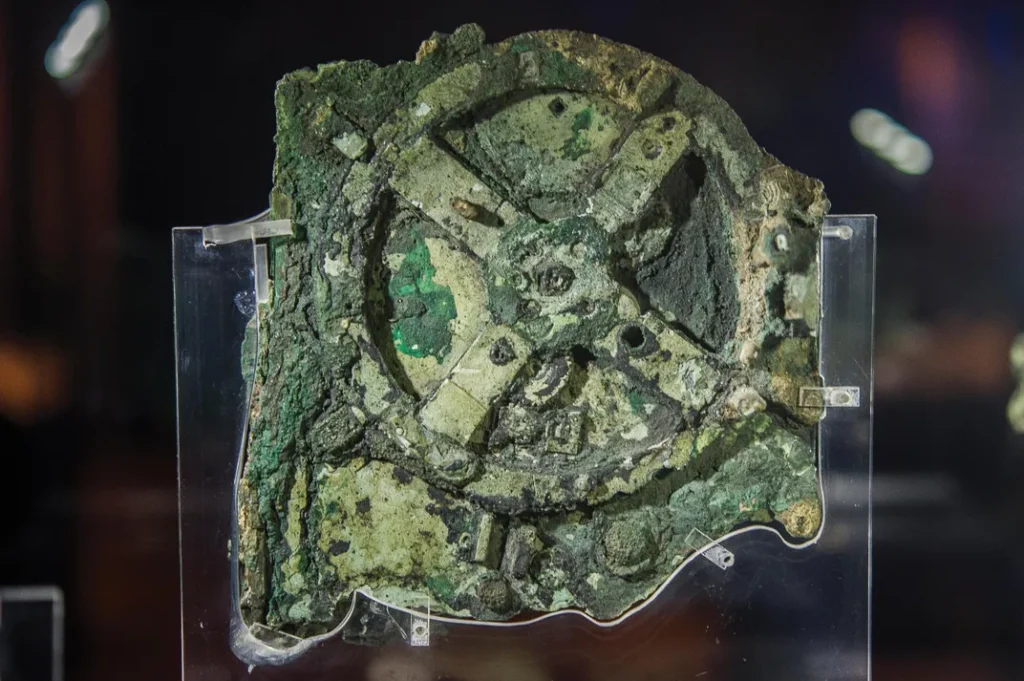 Pin
Pin Image from Smithsonian Magazine
The Antikythera Mechanism is a remarkable discovery, an intricate ancient Greek invention used for charting celestial movements. Combining advanced gears and dials, it operated as an analog computer to track astronomical positions with astonishing accuracy. This marvel provided insights into planetary paths, eclipses, and even the Olympic games. Its complexity showcases the sophisticated knowledge and craftsmanship of its time, offering a glimpse into the advanced scientific understanding of ancient civilizations. The Antikythera Mechanism remains a testament to the ingenuity and curiosity of the ancient Greeks in unraveling the mysteries of the cosmos.
2. The Baghdad Battery
 Pin
Pin Image from Steemit
The Baghdad Battery, a fascinating artifact dating back 2,000 years, resembles a galvanic cell, hinting at early electricity utilization. Discovered in Iraq, this puzzling ancient object consists of a clay jar, a copper cylinder, and an iron rod—elements akin to a primitive battery. While its exact purpose remains debated, theories suggest it might have been used for electroplating, pain relief, or as a religious object. The Baghdad Battery challenges our understanding of ancient technology and sparks questions about the innovative applications of electricity in early civilizations. This enigmatic artifact serves as a compelling glimpse into the historical quest for power and discovery.
3. The Nazca Lines
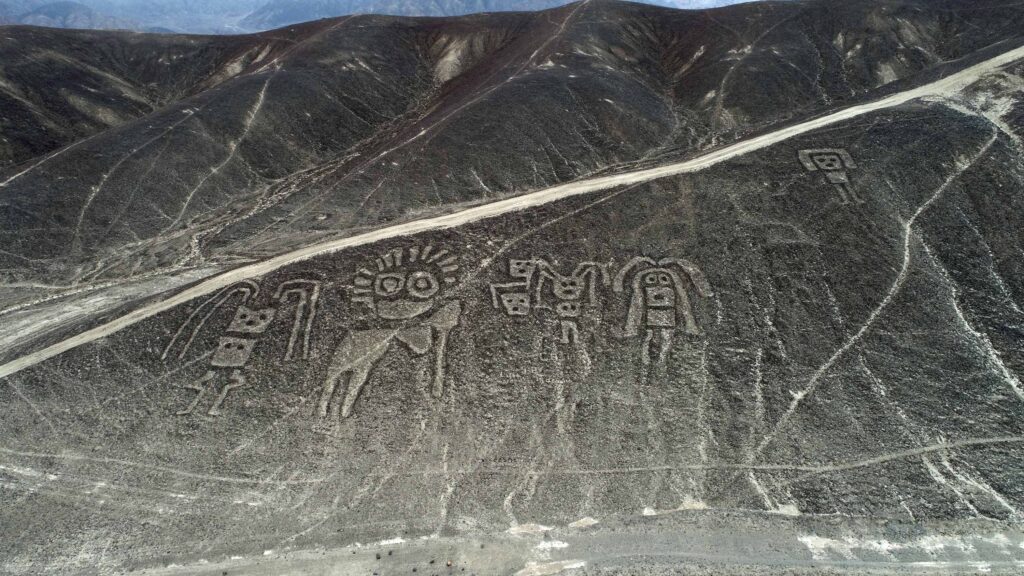 Pin
Pin Image from CNN
The Nazca Lines are vast geoglyphs etched into the desert floor of Peru, showcasing intricate designs that are only fully visible from the air. Created by the ancient Nazca civilization, these colossal artworks include depictions of animals, plants, and geometric shapes, covering a large expanse of terrain. Their purpose remains shrouded in mystery, with theories ranging from astronomical calendars to religious rituals. The precision and scale of the Nazca Lines demonstrate the extraordinary artistic and technical skills of the Nazca people, leaving a lasting legacy that continues to intrigue and captivate modern-day observers with their enigmatic beauty.
4. Stonehenge
 Pin
Pin Image from HistoryExtra
Stonehenge, a prehistoric monument in England, features massive standing stones meticulously arranged to align with celestial events such as the solstices and equinoxes. This enigmatic site, constructed over 4,000 years ago, continues to puzzle researchers and visitors alike with its precise astronomical orientation and enduring mystery. The purpose of Stonehenge remains a subject of debate, with theories ranging from a burial site to a ceremonial temple or astronomical observatory. Its awe-inspiring stone structures and celestial alignment showcase the ancient builders’ deep connection to the cosmos, making Stonehenge a timeless symbol of human ingenuity and fascination with the stars.
5. The Pyramids of Egypt
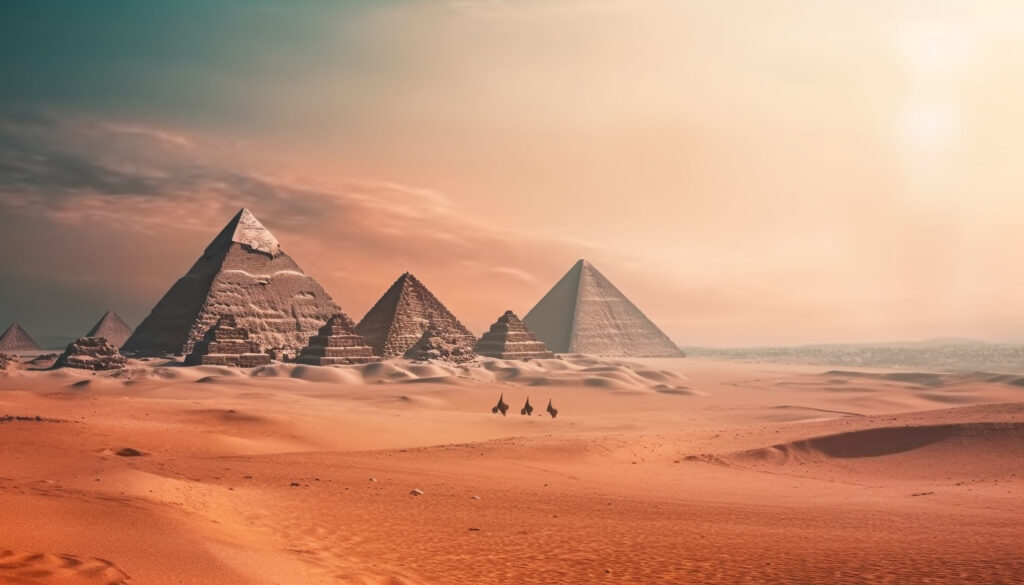 Pin
Pin The Pyramids of Egypt stand as monumental structures, crafted with incredible precision and advanced engineering techniques. These ancient marvels, built by the hands of skilled laborers thousands of years ago, continue to awe and inspire people from around the world. The sheer size and complexity of the pyramids showcase the ingenuity and expertise of the ancient Egyptian civilization. Their enduring presence serves as a reminder of the remarkable capabilities and determination of humanity to create lasting legacies that transcend time and continue to captivate our imagination to this day.
6. The Voynich Manuscript
 Pin
Pin Image from Crystalinks
The Voynich Manuscript remains a cryptic enigma, a medieval codex shrouded in mystery with its undeciphered text and perplexing illustrations. Its pages, filled with intricate drawings of unknown plants, celestial charts, and esoteric diagrams, defy all attempts at interpretation. Scholars, cryptographers, and enthusiasts alike have struggled for centuries to unravel its secrets, yet its true meaning continues to elude even the most brilliant minds. The Voynich Manuscript tantalizes with its air of intrigue, offering a glimpse into a world of ancient knowledge and wisdom that remains tantalizingly beyond our comprehension.
7. The Moai Statues of Easter Island
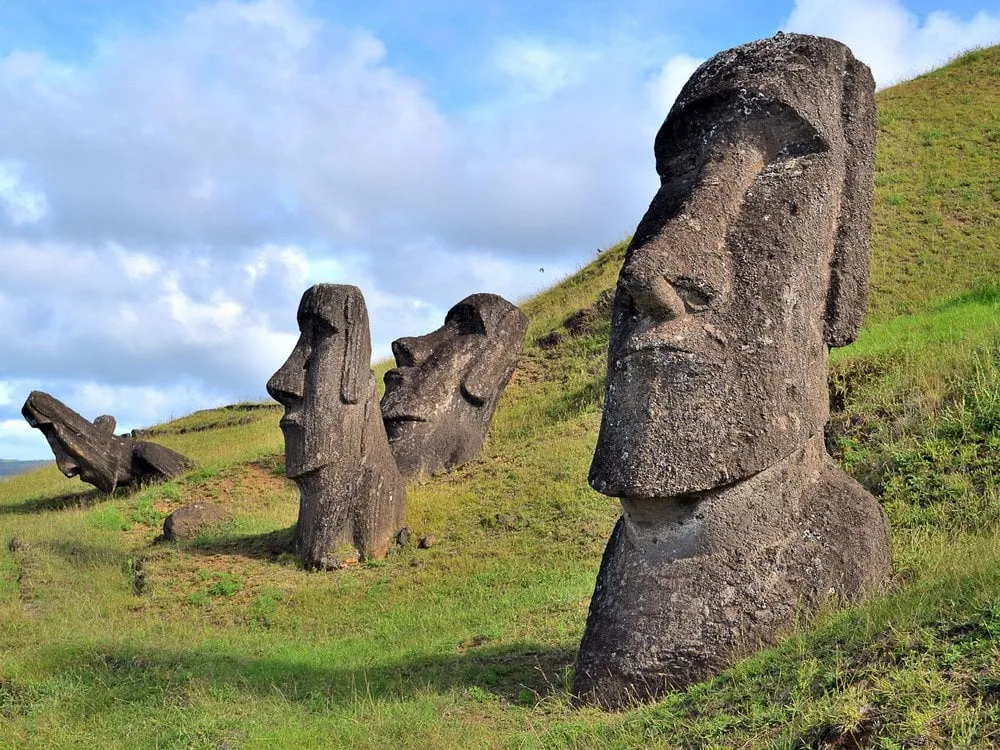 Pin
Pin Image from Smithsonian Magazine
The Moai Statues of Easter Island stand as colossal enigmas, massive stone figures weighing tons, transported across the island by a mysterious, unknown method. These monolithic giants, with their solemn expressions and towering presence, evoke a sense of wonder and curiosity about the civilization that created them. Despite years of study, the precise techniques used to move these statues remain a baffling puzzle, hinting at the advanced engineering skills of the ancient Rapa Nui people. The Moai statues continue to intrigue and inspire awe, their silent guardianship over the island embodying a timeless testament to human ingenuity and craftsmanship.
8. The Great Wall of China
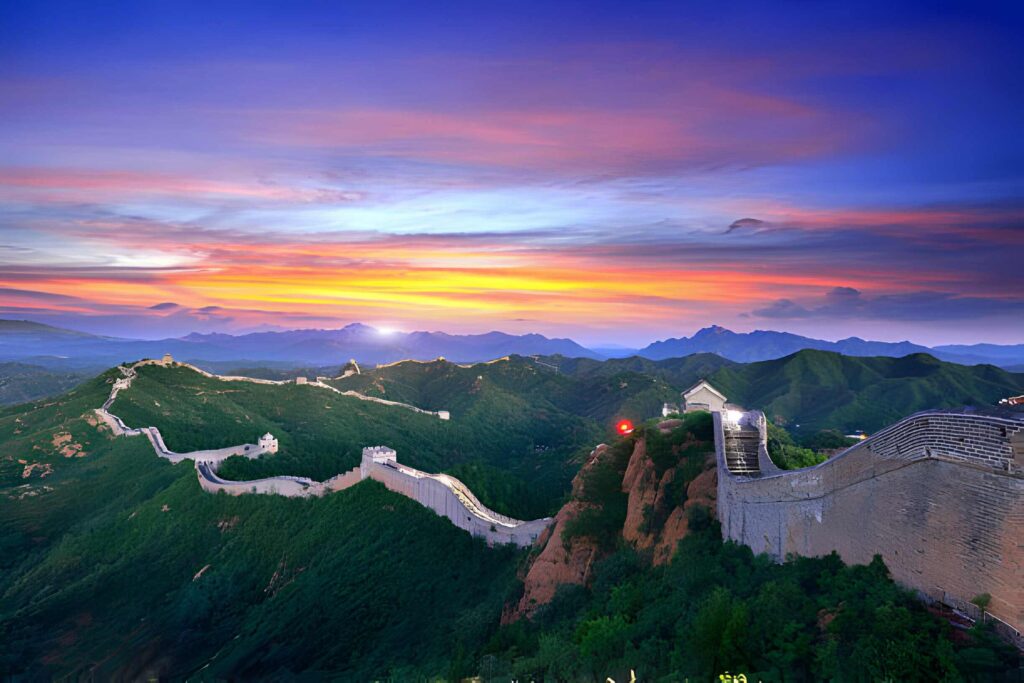 Pin
Pin The Great Wall of China stands as a monumental feat of ancient engineering, a massive fortification stretching thousands of kilometers across rugged landscapes. Built over centuries to protect against invasions, this architectural marvel weaves through mountains, deserts, and grasslands, embodying the ingenuity and perseverance of the Chinese civilization. The sheer scale and grandeur of the Great Wall inspire awe and admiration, a symbol of strength and resilience that has withstood the tests of time. As a UNESCO World Heritage site, it continues to captivate visitors worldwide, offering a glimpse into China’s rich history and unwavering commitment to defense and unity.
9. Greek Fire
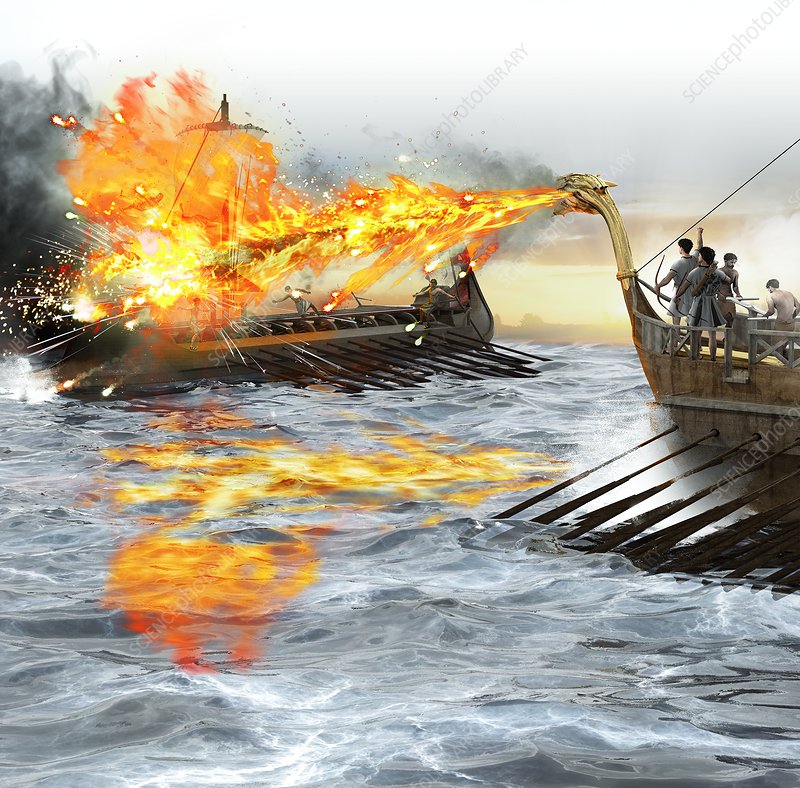 Pin
Pin Image from Science Photo Library
Greek Fire, a mysterious incendiary weapon shrouded in secrecy, was wielded by the Byzantine Empire in medieval times with devastating effect. This volatile substance, believed to be a closely guarded state secret, was unleashed upon enemy ships and soldiers, engulfing them in flames that seemed to defy the laws of nature. The exact composition and method of deployment of Greek Fire remain a subject of speculation and intrigue, adding to its legendary status in history. Its use in naval warfare bestowed a fearsome reputation upon the Byzantine forces, earning them victories and ensuring their dominance on the Mediterranean seas.
10. The Iron Pillar of Delhi
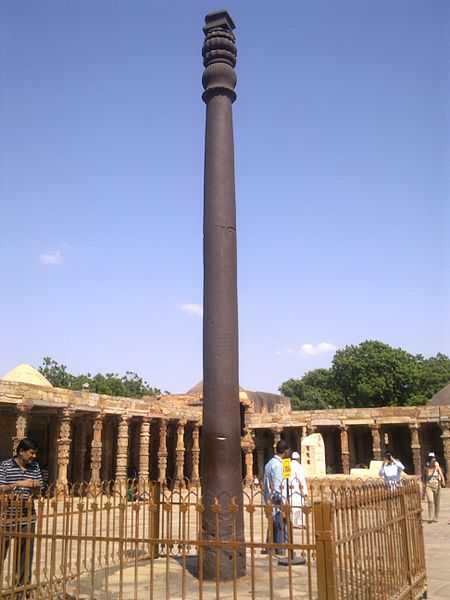 Pin
Pin Image from Holidify
The Iron Pillar of Delhi, a rust-resistant marvel dating back to the 4th century AD, stands as a testament to ancient Indian metallurgical expertise. Located in the Qutb complex, this towering pillar has defied corrosion for over a thousand years, showcasing the advanced engineering skills of its creators. Inscribed with intricate Sanskrit inscriptions honoring King Chandragupta II, the pillar’s preservation has puzzled scientists and historians for centuries. Its enduring resilience against the elements symbolizes the ingenuity and craftsmanship of ancient India, captivating visitors and researchers alike with its mysterious ability to withstand the passage of time.
11. The Lycurgus Cup
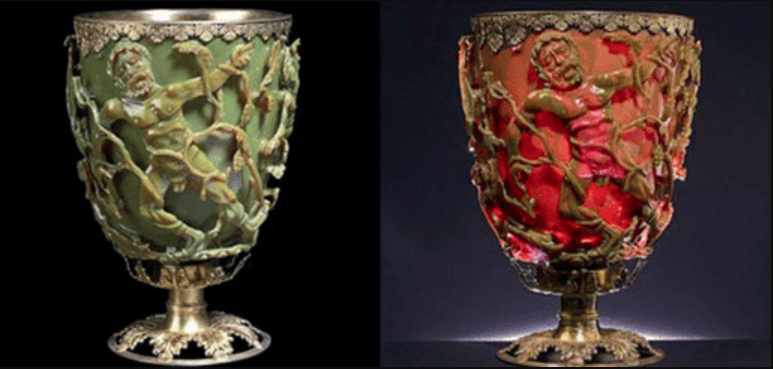 Pin
Pin Image from ResearchGate
The Lycurgus Cup, a Roman glass cage chalice, mesmerizes viewers with its unique color-changing properties based on light sources. Crafted in the 4th century AD, this ancient marvel baffles researchers with its dichroic nature, transforming from green to red when illuminated from different angles. Depicting the myth of King Lycurgus, the cup’s intricate design and innovative glassmaking techniques showcase the artistic and technical brilliance of its creators. Held at the British Museum, this rare artifact continues to enchant spectators, offering a glimpse into the ancient world’s mastery of glass craftsmanship and optical illusions.
12. Ollantaytambo
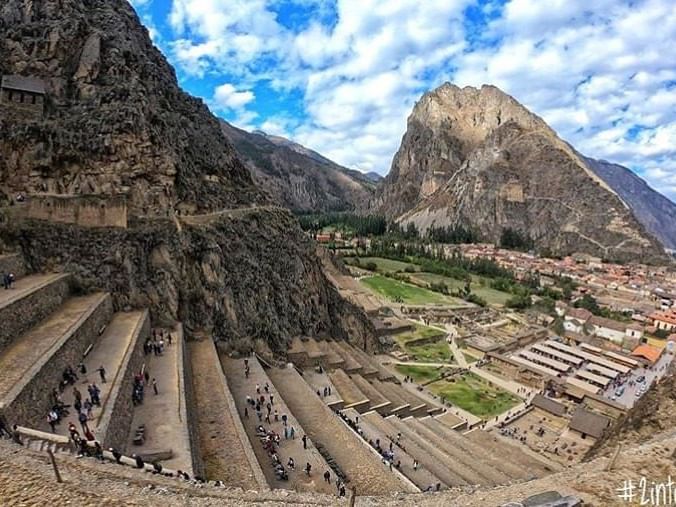 Pin
Pin Image from Sumaq Machu Picchu Hotel
Ollantaytambo, an ancient Inca site in Peru, showcases remarkable precision-cut stones that interlock flawlessly without mortar. Believed to have served as both a religious and military complex, this archaeological marvel stands as a testament to the Inca civilization’s advanced engineering skills. The massive stones, meticulously carved and fitted together like a giant jigsaw puzzle, have withstood centuries of earthquakes and erosion. Ollantaytambo’s impressive stonework, combined with its strategic location in the Sacred Valley, offers a glimpse into the ingenuity and craftsmanship of the Inca people, leaving visitors in awe of their architectural prowess and cultural legacy.
13. Nimrud Lens
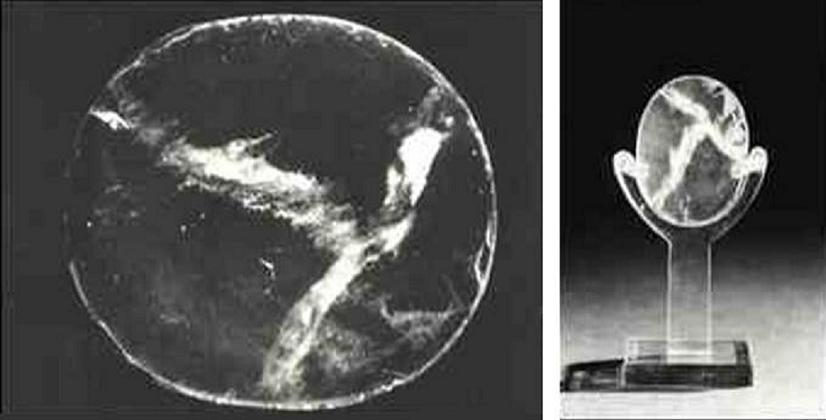 Pin
Pin The Nimrud Lens, a small, mysterious artefact discovered in the ancient Assyrian city of Nimrud, Iraq, is a polished rock crystal lens dating back to the 7th century BC. Some researchers speculate that this lens could have been used as an optical tool, possibly for magnification or starting fires. The exact purpose and significance of the Nimrud Lens remain subject to debate and interpretation, adding to its enigmatic allure. Despite its small size, this ancient artefact continues to captivate scholars and enthusiasts alike, offering a fascinating glimpse into the technological knowledge and craftsmanship of the ancient Assyrians.
14. Zhang Heng’s Seismoscope
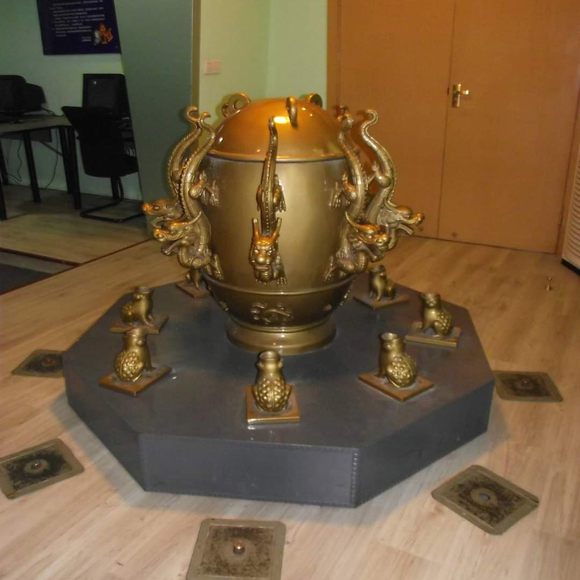 Pin
Pin Image from Atlas Obscura
Zhang Heng’s Seismoscope, an ancient Chinese invention from the 2nd century AD, was a groundbreaking device designed to detect earthquakes. This impressive instrument featured a bronze structure with dragon figurines pointing towards the direction of seismic activity when tremors occurred. Zhang Heng’s ingenuity allowed for the precise detection of earthquakes even hundreds of miles away. Though not fully understood in its time, the seismoscope demonstrated remarkable scientific foresight and technological advancement, showcasing Zhang Heng’s pioneering contribution to early earthquake detection and highlighting the sophistication of ancient Chinese engineering and scientific knowledge.
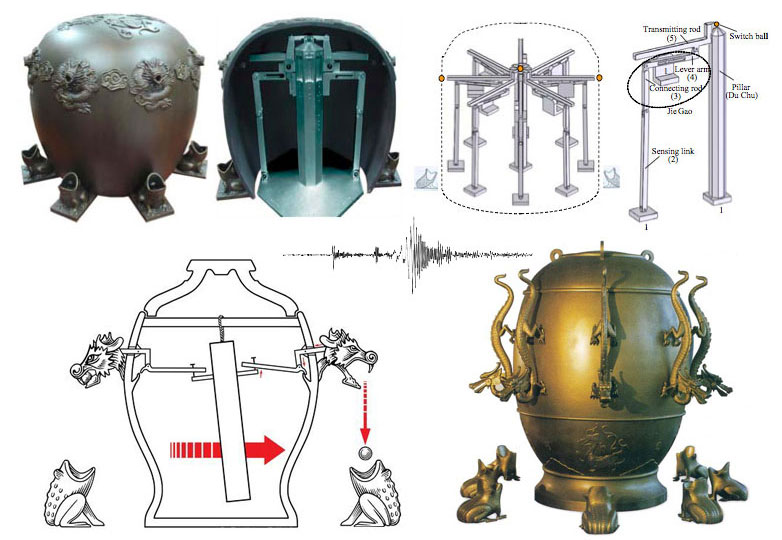 Pin
Pin Image from allshookup.org
15. Roman Dodecahedron
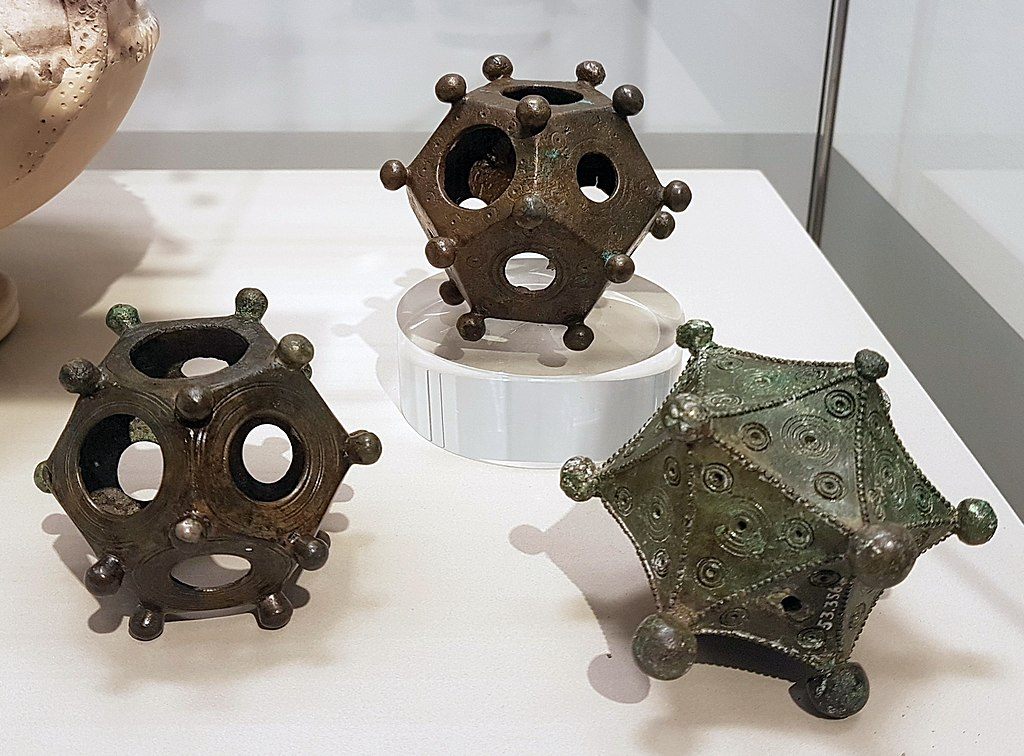 Pin
Pin Image from Atlas Obscura
Roman Dodecahedra are mysterious small hollow objects with twelve flat pentagonal faces, each with a circular hole in the center. These ancient artifacts date back to the Roman Empire but their exact purpose remains unknown. Speculations suggest they may have been used as measuring instruments, religious items, candle holders, decorative pieces, or even gaming dice. Found across Europe, the Roman Dodecahedra continue to puzzle historians and archaeologists due to the lack of concrete evidence about their function. Their enigmatic nature adds to their intrigue, sparking curiosity about the daily life and practices of ancient Romans.
Ancient Inventions That Changed the World
I. The Wheel
 Pin
Pin Image from Live Science
The invention of the wheel, believed to have originated around 3500 BC in Mesopotamia, revolutionized transportation, trade, and technology. Its simple yet transformative design enabled the movement of goods and people more efficiently, leading to the development of carts, chariots, and later, vehicles. The wheel’s impact extended beyond transportation, enhancing pottery-making, textile production, and mechanical devices. This ancient innovation laid the foundation for modern civilization, shaping infrastructure, commerce, and industry. The wheel’s enduring legacy underscores its status as one of the most revolutionary inventions in history, fundamentally changing the way humans interact and progress.
II. The Calendar
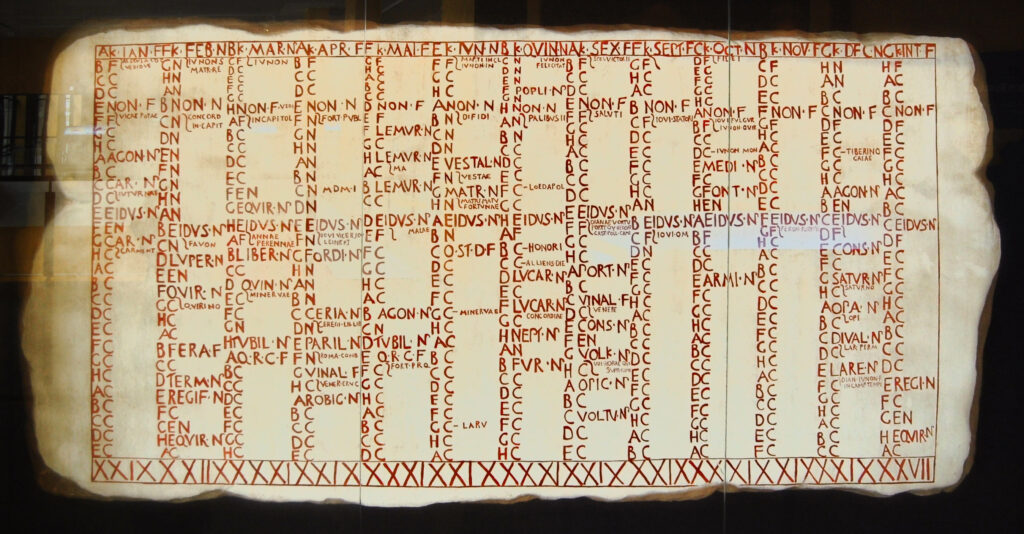 Pin
Pin Image from Wikipedia
The calendar, a crucial ancient invention, emerged across various civilizations to track time, seasons, and celestial events. The Egyptian solar calendar, with 365 days, influenced the development of later calendars. The Roman calendar, refined with lunar phases, evolved into the Gregorian calendar still used today. Ancient cultures such as the Mayans and Chinese also devised intricate calendar systems based on astronomical observations. These early calendars structured societies, organized religious festivals, guided agricultural cycles, and facilitated trade. By dividing time into manageable units, ancient calendars laid the foundation for scheduling activities, predicting events, and understanding the passage of time.
III. The Compass
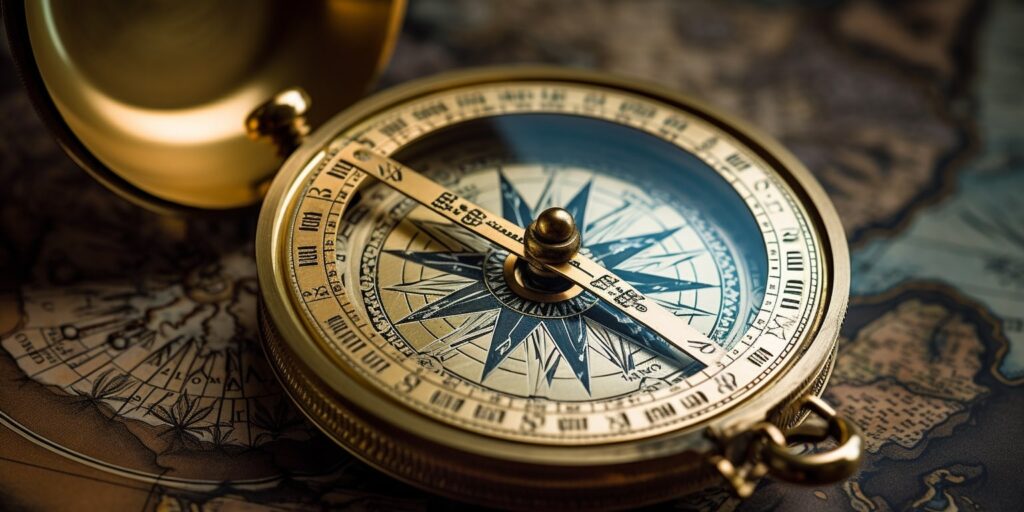 Pin
Pin Image from Knights Templar
The compass, a revolutionary ancient invention originating in China around the 2nd century BC, transformed navigation and exploration. Initially a simple lodestone floating on water, it later evolved into a magnetized needle aligning with Earth’s magnetic field. This device enabled sailors to determine cardinal directions accurately, expanding trade routes and facilitating global exploration. The compass played a pivotal role in maritime history, empowering civilizations like the Chinese, Arab, and European empires to navigate vast oceans with confidence. This essential tool not only reshaped trade and travel but also deepened humanity’s understanding of geography and the natural world.
IV. Paper
 Pin
Pin Image from The Azb
The invention of paper is credited to the Han Dynasty in ancient China, around 200 BCE. Originally made from mulberry bark, hemp, and rags, paper revolutionized communication, learning, and record-keeping. Its lightweight and portable nature enabled the mass production of books, spreading knowledge and ideas across civilizations. The shift from cumbersome clay tablets and parchment to paper transformed the way information was shared, fueling advancements in education, governance, and art. Paper’s ripple effect on society cannot be overstated, shaping the course of history and serving as a foundational invention that continues to impact modern life in countless ways.
V. Concrete
 Pin
Pin Image from megaslab
Concrete, a crucial innovation dated back to ancient Rome, revolutionized construction with its durability and versatility. Composed of cement, water, and aggregates, concrete transformed architectural possibilities, enabling the construction of monumental structures like the Pantheon and aqueducts. Its ability to mold into various shapes, harden over time, and withstand immense pressure elevated engineering feats worldwide. From skyscrapers and bridges to dams and highways, concrete remains a cornerstone of modern infrastructure. This invention’s enduring impact on urban development, transportation, and architecture underscores its status as a fundamental building material that has shaped the built environment for centuries.
VI. Clock
 Pin
Pin Image from Science4Fun
The invention of the clock, traced back to ancient civilizations like the Egyptians and Greeks, revolutionized timekeeping and organization. Early sundials and water clocks evolved into mechanical and later electronic timepieces, facilitating precise measurement of time for societal coordination and scientific endeavors. Clocks became essential tools for navigation, industry, and scheduling, leading to advancements in science and technology. From pendulum clocks to atomic clocks, each innovation refined accuracy and efficiency in timekeeping. The ubiquitous presence of clocks in modern life reflects their profound impact on productivity, communication, and global synchronization, shaping how we perceive and manage time.
VII. Printing Press
 Pin
Pin Image from JH French & Co. Limited
The invention of the printing press by Johannes Gutenberg in the 15th century revolutionized communication, education, and the spread of knowledge. Prior to this groundbreaking innovation, books were painstakingly copied by hand, limiting access to information. The printing press, with its movable type technology, enabled the mass production of books, pamphlets, and newspapers on a scale previously unimaginable. This democratization of information fueled the Renaissance, Reformation, and Enlightenment, shaping modern society’s intellectual landscape. The printing press remains a cornerstone of media and dissemination of ideas, heralding an era of widespread literacy, cultural exchange, and the preservation of human history.
The legacy of ancient technology serves as a testament to human ingenuity and perseverance throughout history. From the architectural marvels of ancient civilizations to the innovative inventions that laid the foundation for modern advancements, ancient technology continues to inspire awe and admiration. These early technologies not only transformed societies and cultures but also paved the way for the remarkable progress and achievements we see today. By studying and appreciating the innovations of our ancestors, we gain a deeper understanding of the journey of human civilization and the enduring impact of technological evolution on shaping the world we live in today.





















